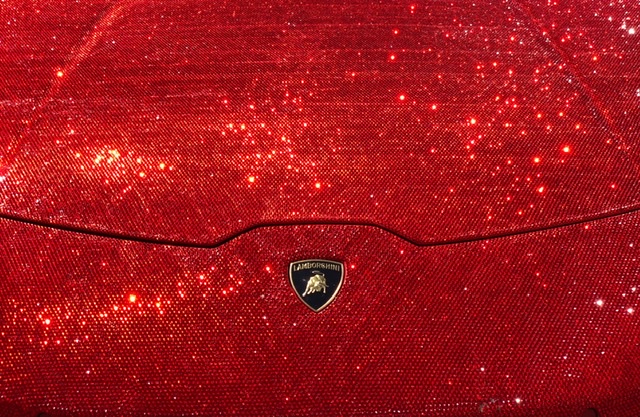The rich are getting richer and richer - what is Labor planning to do about it?
May 30, 2021
While Federal Labor is disappearing into a fearful huddle desperate to avoid any suggestion it would ever try to make Australia a more equitable place, the rich are getting richer and richer.
Labor has abandoned getting rid of negative gearing; preparing to let through tax cuts which disproportionately favour the well-off; and, dropped the plan to remove dividend imputation.
In contrast. Joe Biden is campaigning for a global minimum corporate tax rate and planning to fund his stimulus program and start tackling the US debt with new taxes on the richest individuals and companies. Simultaneously the Victorian Treasurer, Tim Pallas, is targeting wealthy property owners.
The publication of the annual AFR Rich List (AFR 28 May 2021) and some new research based on Forbes’ world’s billionaires list by Ruchir Sharma, Chief Global Strategist Morgan Stanley Investment Management (Weekend Financial Times 15/16 May 2021), demonstrates just how much richer billionaires everywhere are getting.
The Sharma data is richer than the more celebratoryAFRreport and gives some interesting perspectives. He finds that in 2021 the total wealth of the billionaire population increased by $US3 trillion to $US12 trillion.
In the US billionaire wealth represented 10% of US GDP in 2010; 15% in 2015 and 20% in 2020. While this seems exceptional, the once social democratic Swedish model saw the billionaires’ share of GDP increase from 20% to 40% in 2021 ranking second globally. France saw billionaire wealth go from 11% of GDP in 2020 to 17% in 2021.
Australian billionaire wealth represented a bit more than 5% of GDP in 2020 but is now well over 10%.
China added an increase of 238 billionaires to take their total to 626 although still less than the US total of 724. Sharma was cautious about Russian estimates but drew, as he did with Mexico, a distinction between ‘good’ and ‘bad’ billionaires reflecting on where wealth stems from particularly areas which are less productive and more prone to corruption.
It is unsurprising that Russia and India rank first and third respectively in terms of billionaire wealth as a percentage of GDP.
In Australia our richest person was still Gina Rinehart ($31.06 billion compared with $28.9 billion in 2020). Fortunately she devotes her wealth to good causes such as funding the Institute of Public Affairs and campaigning against taxes.
Twiggy Forrest is next with $27.25 billion up from $23 billion last year. Mike Cannon-Brookes moves from fifth to third increasing his wealth from $16.93 billion to $20.18 billion.
Anthony Pratt, having dropped from first in 2019 to third in 2020 is fourth in 2021. The fact that his companies actually make things may be counting against him.
The rest of the list is made up by Scott Farquhar ($20 bn); Harry Triguboff ($17.27 bn); Clive Palmer ($13.01 bn); Hui Wing May ($11.7 billion); Frank Lowy ($8.51 bn); and, Melanie Perkins and Cliff Obrecht ($7.98 bn). Kerry Stokes was 10thin 2020 but dropped out of the top 10 this year.
The most obvious thing about the list is that most Australian fortunes are built on a combination of inheritance, extraction of resources and property. Technology is only represented three times and manufacturing once. This skew is hardly a recipe for success in the 21stcentury.
In the meantime OECD measures of inequality makes Australia the 11thmost unequal nation in the OECD ranking behind most of Europe and Canada but ahead of Portugal, Greece, Spain, Israel and Latvia.
According to the Labor MP Julian Hill’sanalysisof Australian international standings 20% of people in Australia hold 64% of the nation’s wealth and COVID had been so great for Australian billionaires that their combined worth was 52.4% higher in December 2020 than it was at the same time in 2019.
Australian workers haven’t been so lucky with real wages. In 2019 they were 0.7% lower than in 2013 which just coincidentally was when Liberal-National Party Governments came to power. That decline put Australia in third last place for wage growth out of 35 OECD countries.
Given the concentration of Australian wealth in extractive, non-renewable resources and property development it is unsurprising that we rank 87th fourth last just head of Burkina Faso, Paraguay and Cambodia in the Harvard Atlas of Economic Complexity. We are also fifth last in OECD productivity growth and productivity growth became negative after the LNP Government came to power.
Consistent with this our R&D investment is also below the OECD and EU averages.
John Micklethwait, Bloomberg editor-in-chief, and Adrian WooldridgeThe Economistpolitical editor call their new book on how the pandemic exposed Western weaknessesThe Wake Up Calland outlines a series of measures to make government performance better.
It’s almost certain Scott Morrison won’t read it and would probably believe any wake up call was a call to embrace religion. Somebody in the Labor Caucus probably Andrew Leigh will have read it and talked about it a bit with colleagues.
His Caucus colleagues probably don’t need to read it just urgently heed the title.

